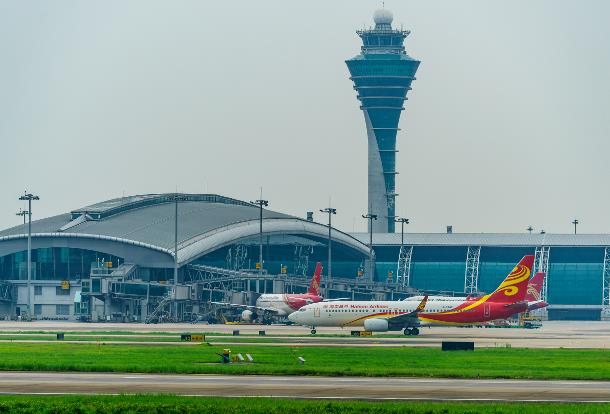
ChinaTravelNews, Ritesh Gupta – Hotel chain H World maintains a positive outlook on its growth strategy, even amidst temporary supply-demand imbalances observed in certain areas of China.
The company has achieved a significant milestone in its expansion, marked by a substantial increase in its hotel network over the past decade. Starting with 607 properties in 2014, H World’s network has grown to a total of 11,147 hotels by the end of 2024.
They achieved the 10,000-hotel milestone in 2024. The team shared that it opened over 2,400 new hotels last year, far exceeding its initial target of 1,800 hotels.
Asset-light strategy
In line with its growth, H World is pursuing an asset-light strategy and continues to exit its leased and owned hotels.
Providing details of how revenue contribution has risen as part of its plans to focus on the asset-light model, opting for more manachised (managed by a third-party company but the owner retains some operational control and pays franchise fees) and franchised hotels, the group shared that for H World its 2024 revenue contribution from managed and franchise hotels reached 40%, up from 35% in 2023.
In the revenue breakdown for its Legacy Huazhu business, the contribution of manachised and franchised hotels has gone up from 43% to 49%. This is a major breakthrough for the hotel chain, as manachised and franchised hotels have surpassed the contribution from leased and owned hotels for the first time on a yearly basis. Commenting on this performance, Hui Chen, CFO of H World, said, “We expect this trend to continue and we believe our asset light strategy will support a gradual and continuous margin expansion of the company and generating strong cash flow as well as help us to become more resilient when navigating through economic cycles.”
Legacy-Huazhu had 11,025 hotels in operation, including 557 leased and owned hotels, and 10,468 manachised and franchised hotels, at the end of 2024. The occupancy rate for all the Legacy-Huazhu hotels in operation was 80% in Q4 of last year, compared with 80.5% in Q4 of 2023, and 84.9% in the previous quarter.
The company stated that it has reduced administration staff by over 30% in its Legacy-DH (Deutsche Hospitality) business. It had 122 hotels in operation at the end of last year. Also, H World has started to accelerate asset-light business journey, with 14 leased and owned hotels removed from its portfolio in Legacy-DH. The major restructuring in 2024 is expected to bring cost savings this year and the plan is to further scrutinise overhead costs.
Overall, revenue increased 7.8% year-over-year to RMB6.0 billion (US$825 million) in Q4. This financial performance surpassed the revenue guidance previously announced of a 1% to 5% increase compared to the Q4 of 2023, increasing 9.2% year-over-year to RMB23.9 billion (US$3.3 billion) for the full year of 2024.
Supply-demand imbalance
Speaking during the company’s Q4 earnings call, Jin Hui, CEO of H World, said out of its record 2,442 new hotels in 2024, 2,430 new openings were contributed by Legacy-Huazhu. This was supported by the company’s acceleration of lower-tier cities penetration to better capture more growth and development opportunity in the China market, said Hui.
The CEO further noted the strong momentum in the upper-midscale segment, with hotel network growth of 35% year-over-year in 2024, outpacing the previous year. The group had 873 hotels in operation in the upper-midscale category and 521 in the pipeline at the end of 2024.
Hui stated that although there were still some macro uncertainties and challenges in 2024, the overall domestic travel demand continued achieving steady growth, as suggested by “industry data” and their own operational results.
He mentioned that the number of passengers transported by railway increased 11.9% year-over-year in 2024, and the domestic air passenger traffic rose by 8.8% during the same period. Leisure travel continued its strong growth momentum and outperformed business travel. According to data from the Ministry of Culture and Tourism, the number of domestic tourists reached 5.6 billion, up 14.8% year-over-year, with the total domestic tourism spending up 17.1% year-over-year, hitting RMB 5.8 trillion. “This reflected people's strong willingness to travel, as well as strong support from local governments to promote tourism activities,” he said.
Hui also addressed the Average Daily Rate (ADR) trends, noting that the ADR was RMB 277 in Q4 of 2024, compared to RMB 301 in the previous quarter. He explained that the hotel industry in China experienced steady growth in demand, particularly with the fast growth in leisure demand. This growth spurred supply increases in some regions and areas, which resulted in temporary supply-demand imbalances and consequently brought some pressures on the ADR. However, looking to the hotel industry in China specifically, he stated that in the long run, the company believes that the hotel industry is a highly market-oriented and a fully competitive industry, and the supply and demand dynamic will gradually return to a more balanced and a reasonable level after a certain period of time.



